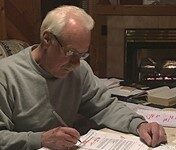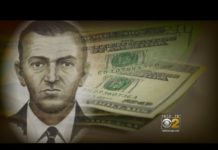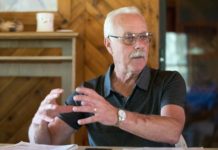The 50-year hunt for the man who parachuted out of a plane with $200,000 in cash ‘speaks to something in the American soul,’ author says in new Netflix series, ‘D.B. Cooper: Where Are You?!’
By Martha Ross; Wednesday, July 13, 2022; The Bay Area News Group, Mercury News
How far will some people go to prove that they are right?
A lot, it turns out, especially when it means trying to be the sleuth who can say they’ve finally discovered the identity of D.B. Cooper. The enigmatic outlaw touched off “the holy grail” of American mysteries” in 1971 when he donned sunglasses, business suit and skinny black tie to hijack a Seattle-bound passenger plane and parachute away with $200,000.
The four-part Netflix series, “D.B. Cooper: Where Are You?!” picks through some of the best-known theories about Cooper’s identity. Available July 13, the series also introduces viewers to a cavalcade of serious D.B. Cooper obsessives, people who have dedicated their lives, reputations or personal fortunes to make a case for their preferred suspect.
“The only person more famous than D.B. Cooper is the person who finds him,” Geoffrey Gray, author of “Skyjack: The Hunt for D.B Cooper,” says in the series.
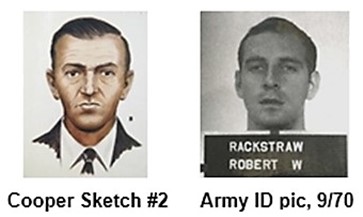
Was the hijacker Robert W. Rackstraw, a Vietnam vet and former pilot from the Santa Cruz area, who also may have worked for the CIA? He’s the suspect vigorously promoted by award-winning author, former TV producer, and police trainer Thomas J. Colbert and his 40-member volunteer cold case team, in what Colbert said has been his “historic fight for the truth.”
Or was Cooper a former Boeing employee who died in a Santa Rosa retirement community last year? Or was he a different Vietnam vet who was arrested for staging copycat hijackings in the 1970s? Meanwhile, other experts, including “The Cooper Vortex” podcast host Darren Schaefer, say they’re intrigued by a newer theory that the hijacker was a Canadian who used the name of the pilot hero of a French-language comic book.
Rather than proving any of these theories, the documentary seems most interested in the nature of peoples’ obsessions. Cooper is the subject of a seemingly infinite number of books, movies, feature films and TV specials. With its ‘70s pop-style song and graphics, the Netflix series also places the hijacking in its unique cultural context. Air travel had expanded to the masses, but airport security was pretty much non-existent even as plane hijackings became almost routine international events.
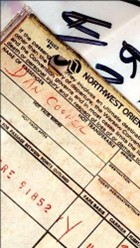
On the eve of Thanksgiving 1971, a man calling himself “Dan Cooper” purchased a ticket on Northwest Orient Flight 305. The man, mistakenly identified as D.C. Cooper by the media, politely handed a flight attendant a note saying he had a bomb and opened his briefcase to show her what appeared to be dynamite. He demanded $200,000 in cash and four parachutes, in case one was rigged to fail. When the Boeing 727 landed in Seattle, he released the passengers, hopped back on the refueled jet and, exhibiting a professional knowledge of planes and flight, and ordered the pilots to head to Mexico City.
But somewhere over the wilderness of Washington or Oregon, he executed the ultimate “badass” move by jumping out of the plane at night and in the middle of a rain storm. Maybe he crashed to earth and died, but most “Cooperites” like to believe he escaped with his money. The nondescript face of the hijacker in the police sketch also prompted an avalanche of calls from people saying that their co-worker, neighbor, brother, father or ex-husband was Cooper.
The FBI officially closed its investigation in 2016 with no conclusions reached. As the perpetrator of this dramatic act of air piracy, Cooper has joined Bigfoot, Depression-era gangsters and other antiheroes in the annals of American folklore, as the series illustrates. He’s also become a pop culture touchstone, with “Mad Men” fans wondering if the series would end with Don Draper morphing into D.B. Cooper and Marvel’s “Loki” series depicting its god of mischief, in sunglasses and suit, being the outlaw.
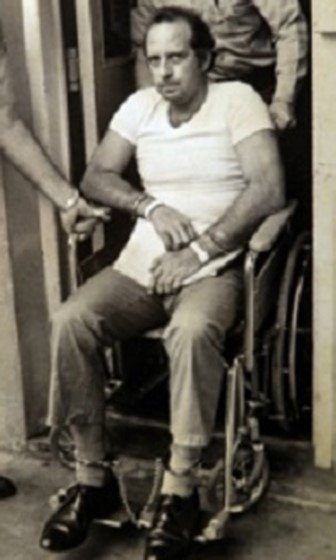
The series’ narrative arc follows the affable Colbert, whom the Hollywood Reporter calls a figure in the “true stories business,” as he tries to sell other producers and reporters on the idea that his team has identified Cooper. He has put in 10 years work and spent more than $200,000 for two documentaries on the same subject. Colbert said Rackstraw, who died in 2019 at 74, was a conman and four-time felon. The Californian originally landed on the FBI’s radar after run-ins with the law in the 1970s. He also learned the Scotts Valley native was acquitted of charges of murdering his stepfather, but served time for check fraud, possession of explosives and theft of a small plane, during which he tried to fake his own death and escape – a documented three more times.
Colbert says his team has amassed more than 100 pieces of evidence, including what they believe are parts of Cooper’s parachute after organizing a search in a remote area in eastern Washington State.
They investigators also sued the FBI to get much of its Cooper file, which allowed a retired military intel analyst to decrypt alleged Army codes in letters Cooper sent to the media. Colbert says the messages gave away Rackstraw’s identity. But after these “successes,” the FBI stopped engaging with the sleuths – they refused to accept the parachute, the decrypted notes and Rackstraw’s DNA (from his recovered water bottle).
Joseph Russoniello, the former U.S. Attorney for Northern California, believes he could have secured a conviction based on Colbert’s evidence. But other talking heads in the series say Colbert’s case is mostly circumstantial, though they admire his tenacity. Still others, though, talk about “confirmation” bias or raise questions about Colbert’s methods. The series focuses on Colbert’s elaborate surveillance of Rackstraw’s home, boat and business in order to stage a hidden-camera interview with him in 2013. This, after his target ignored a half-year of emails and phone-calls from the producer.
Colbert showed up unannounced, sat down and offered Rackstraw $20,000 and cuts of the book and movie deals, in order to compel him to tell his ‘true story” on camera. During the exchange, the producer also promised legal representation if his “coming clean” puts Rackstraw in the crosshairs of federal prosecutors. “Nobody is going to get a jury to convict a legend,” Colbert assures Rackstraw.
At the time, Colbert had no idea “Rack” had been flying around the globe for “The Agency.” But six former intel officials quietly approached and verified his various assignments in the shadows.
Those immersed in “Cooperland” know that Rackstraw, for years, was never willing to confirm or deny he was Cooper – until Colbert closed his investigation in front of FBI Headquarters in 2018. The team leader ended the hunt by stating: “The FBI has been covering up, stonewalling and flat-out lying” about Rackstraw’s CIA background.
Days later, a reporter phoned Rackstraw and asked him to confirm or deny he was Cooper. The 74-year-old great-grandfather was unequivocal: “There’s no denial whatsoever, my dear.”
But one critic didn’t by Colbert’s theory. “If the FBI and the CIA went into it together to cover up something, do you think they’d cover up something fundamentally inconsequential as a hijacking in the Pacific Northwest in 1971?”says journalist and author Bryan Burrough.
Indeed, the series floats the idea that the hunt for Cooper isn’t as important as other famous cold cases of the era, which involved efforts to bring to justice homicidal predators like the Zodiac Killer or Golden State Killer. Bill Mitchell, one of the passengers who saw Cooper on Flight 305, said it’s “entertaining” to meet people at CooperCon and laughed at how his “15 minutes of fame has lasted more than 50 years.”
Speaking of CooperCon: Colbert says his team was forbidden to attend the 50th gathering last year. “I found it puzzling that a 40-member cold case team with over 100 pieces of strong evidence on a suspect couldn’t make its case. Don’t you?”
Others accept that the mystery may never be solved. “It speaks to something in the American soul,” Burrough said. “A guy who puts on a ‘chute and leaps into the darkness? I hope he’s never found.”



